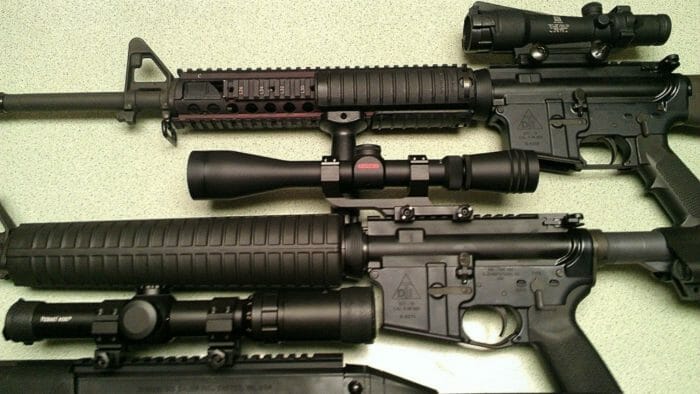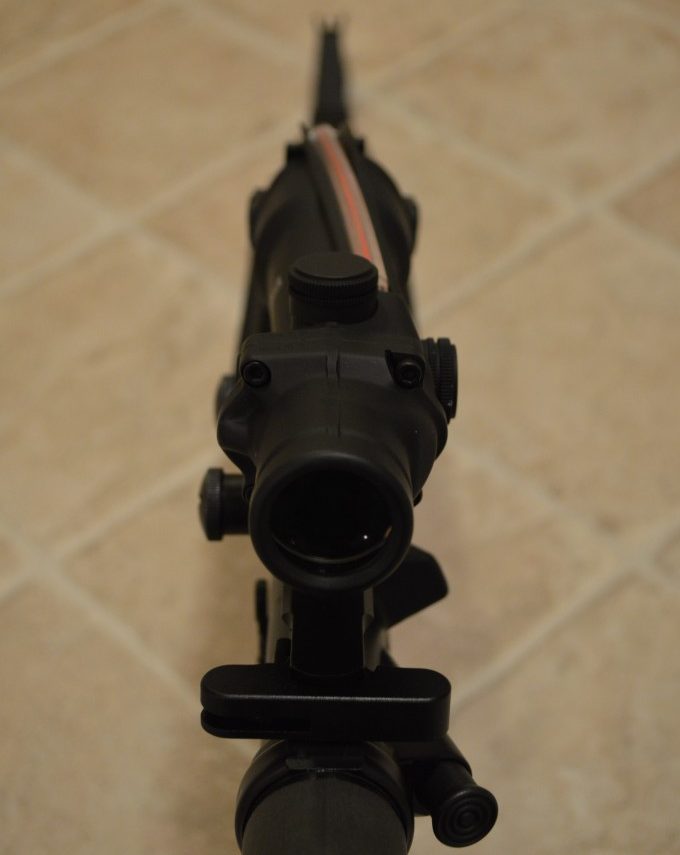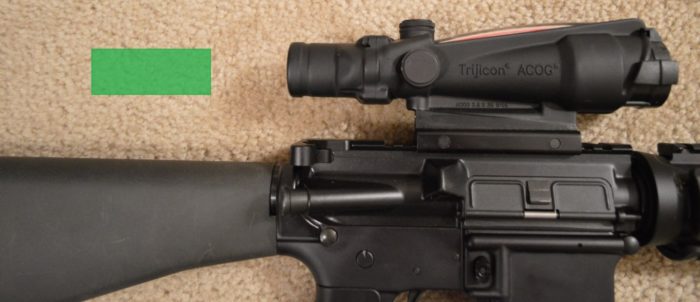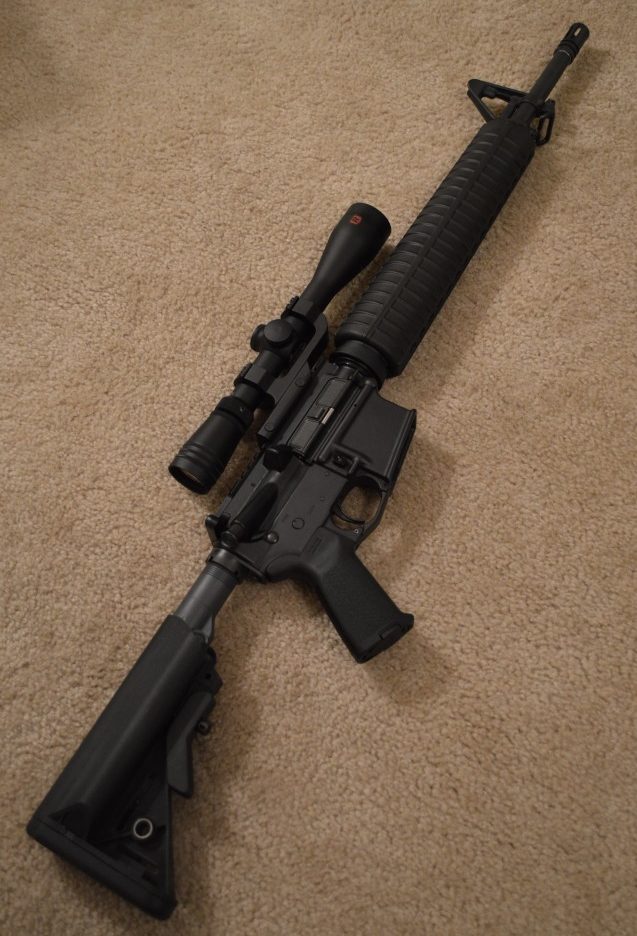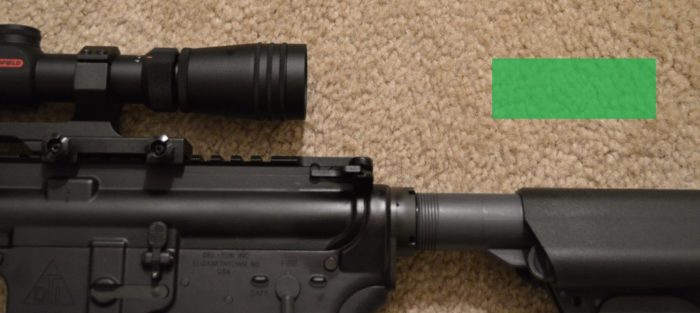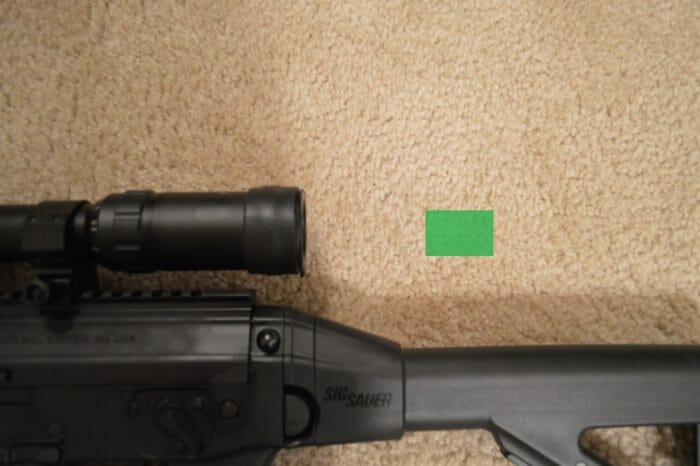What am I Getting? A Comparison of Popular Optics
Introduction
In comparison to other segments of the firearms market, shopping for optics can be a very confusing and especially difficult process. Opinions on these accessories are incredibly varied, with some believing it is best to spend as much (or more) on sight as the rifle it will sit on. Other, more budget-oriented shooters prefer to find the cheapest option that will get the job done. To them, it is more important that the optics serve them well at the range than it is for the sight to be able to withstand World War Three. Fortunately, the diverse market can support both kinds of buyers, but it is still crucial that people understand what their money will be getting them before dropping the coin.
In this article, I hope to clear up some of the confusion related to this budget versus performance debate, as well as shed some light on the advantages and disadvantages of a few popular types of scope. I will try to keep this discussion primarily empirical in an effort to avoid the often confusing scientific side of magnified optics. Since we will be discussing three specific scope models (Trijicon ACOG TA11-J, Redfield Revolution 4-12x40mm, Primary Arms 1-4x24mm), this may also serve as a brief review of these models for those who might be interested in such specific offerings.
Trijicon ACOG TA11-J
The first scope in this lineup also happens to be the first of the three to come into my possession. As many readers probably know, Trijicon’s ACOG line of scopes are incredibly durable pieces of equipment that have exploded in popularity since becoming an issued weapon sight in several military branches, both domestic and foreign. Because of this quality and demand, the ACOG is also the most expensive scope in this comparison and by no small margin. Those looking for a new 3.5x35mm TA11 series scope should expect to pay over $1200. Used examples tend to carry a significant discount but can easily push the $900-1000 envelope.
One thing that makes the ACOG such a popular combat optic is its fixed magnification. At 3.5x (the popular TA01 and TA31 models are 4x), the TA11 offers a marked improvement over the naked eye but is by no means a “sniper’s” optic for those looking to hit the X-ring every time at 500+ yards. It should be noted that the “J” model like mine uses a red-illuminated crosshair reticle. This does afford some additional precision over the popular chevron and donut ACOG reticles. Because it is fixed power and has fewer moving parts, the ACOG tends to be much more durable than your average variable power scope.
Another upside for the ACOG is that the low magnification results in more forgiving eye relief, or greater distance from the focal lens to the shooter’s eye. This is important because there often exists a delicate balance between overall scope length, magnification, and eye relief. Generally, shorter scopes have shorter eye relief. On the other hand, higher magnification can also result in shorter eye relief. Because the ACOG is a very compact optic, it runs the risk of having very poor eye relief. Still, this small footprint is adequately countered by the scopes relatively low magnification. Although the ACOGs by no means have the best eye relief in the industry, they are more than good enough for quick target acquisition and combat. It is also important to note that the ACOG’s short overall length (8 inches) means that the sight allows shooters a higher degree of flexibility in side-to-side movement. In other words, though proper cheek weld is essential for accurate shooting, the ACOG enables users to get by with less than ideal form.
Two places where the ACOG shines in this comparison are glass quality and reticle illumination. Though other high-end scopes (Nightforce, US Optics, etc.) may boast clearer glass, the ACOG is no slouch. In terms of light transmission, looking through the scope is barely any different than viewing something with the naked eye outside of the magnification, of course. The sight picture is very clear edge to edge. This glass quality also helps the ACOG in terms of eye relief to a degree. The ACOG’s clarity is enhanced by effective illumination via the fiber optic at the top of the scope. In addition to this ambient-sourced fiber optic illumination, the ACOG is equipped with radioactive (not on the level of weapons-grade Uranium, of course) Tritium that ensures the reticle can be seen in very low light conditions.
With the included mount, the ACOG is much lighter than typical rifle scopes, weighing in at a svelte 14 ounces.
Redfield Revolution 4-12x40mm
The history of the Redfield name is somewhat perplexing for those who have not followed optics or the company specifically. Despite the company’s history, it is now under the ownership of respected manufacturer, Leupold and is churning out scopes with respectable specifications and lifetime warranties. The Revolution line is Redfield’s new(ish) line of US-made variable power optics with features very similar to Leupold’s classic VX-II line. This particular scope retails for just under $300.
Because the Revolution is a longer, traditional rifle scope, the eye relief on this scope is greater than that of the Trijicon ACOG TA11. This is important because the Revolution is a multicaliber scope, whereas the ACOG is specifically designed for .223/5.56mm ammunition. The long eye relief means that the Revolution can be used with harder recoiling firearms without concern for getting a focal lens in the eye. Note: this is not to say that the ACOG cannot be used with heavier calibers. People use them with .308 and above all the time, and there are models designed for these heavier rounds.
Another feature that differentiates the Revolution from the ACOG is the presence of adjustable magnification. This particular model is adjustable from 4x to 12x using a ring at the rear of the scope, near the focal lens. At 4x, the scope has its greatest eye relief, while users are likely to notice shorter eye relief as they increase magnification towards 12x. Advertised eye relief for this Revolution is 3.7-4.2”, depending on magnification. The Revolution uses a second focal plane (SFP) reticle. This means that as the scope is adjusted, the apparent size of the reticle remains the same. Since the reticle changes size relative to the target at different magnifications, the Bullet Drop Compensator (BDC) is only calibrated for the 12x setting. Because the scope is adjustable, it may not be as durable as the ACOG. However, the similarities it shares with the VX-II leave me unconcerned about its durability, even in harsh conditions.
The glass on the Revolution is above average and is pretty typical for a scope in the ~$300 price range. At 4x, the sight picture is bright, and light transmission is very good, with minimal dimming around the edges of the picture. The scope is also most forgiving from a cheek weld perspective at this magnification. As you move closer to 12x, the light transmission suffers somewhat. This is normal for most scopes and does not pose any real issues in decent lighting. Still, the scope performs very well compared to similarly priced rivals. Because the scope lacks illumination, it is not ideal for low light or night shooting. This particular example possesses a generic .223 BDC.
I have mounted the Revolution using a Primary Arms Deluxe mount. This mount works very well and has faithfully held zero for over a year on this rifle. The combination weighs in at around 20 ounces.
Primary Arms 1-4x24mm (PA14X)
For those who do not actively follow the optics world, Primary Arms has made quite a splash over the past few years for offering a variety of affordable scopes and red dot sights that are backed by excellent customer service and attention to quality. Primary Arms is known for holding its overseas suppliers to stringent quality levels and, as a result, provides optics that far surpass many other Chinese-made offerings. This particular model, the 1-4x24mm PA14X, was one of Primary Arms’ first major releases and remains one of their most popular scopes. Primary Arms sells the PA14X for the very reasonable price of $119.
Like the Redfield Revolution, the Primary Arms PA14X is a more traditional style rifle scope. The eye relief on this model is a little greater than the ACOG, but perhaps not quite as good as that found on the Revolution. There also seems to be a smaller window of acceptable eye relief on this scope in comparison to the ACOG and Revolution. Much like the Redfield, the eye relief shrinks as you adjust the magnification upward. Primary Arms advertises eye relief of 3.5”, but this will vary depending on magnification. At 1x, the eye relief is very forgiving but is not on the level of a red dot. It should also be noted that the 1x setting does not produce a pure unmagnified picture, but is close enough for most purposes. For me, this took some getting used to as I switched from a cheap red dot (more about this in a later write-up) and had grown used to the infinite eye relief that is characteristic of red dot optics. Those looking to make a similar migration will need to take note that even at 1x, the PA14X does not have infinite eye relief. As such, users must take some extra care to ensure proper cheek weld to achieve an acceptable sight picture.
The reticle on the PA14X is a crosshair with a floating 2 minute of arc (MOA) dot in the middle. This dot is illuminated using a dial on the side of the scope. In daylight, the illumination washes out, unlike the far more expensive ACOG. Still, in low light environments, it is a nice feature. Like the Revolution, the PA14X uses an SFP reticle. However, this does not matter as much with the Primary Arms scope because there are no BDC or mil-dots to be concerned with. An additional note is that photographer Oleg Volk has reported that he used this scope on a .450 Marlin rifle and that it maintained zero with no trouble. I find this impressive for such an affordable offering as maintaining zero under heavy recoil seems to be a real challenge for budget optics.
In terms of glass quality, the PA14X makes a surprisingly good showing. Although not near the ACOG in this category, the PA14X approaches the Revolution from an image clarity and brightness standpoint. While the Revolution does have noticeably better eye relief and slightly better image brightness in a 1 to 1 comparison at 4x, the PA14X does not disappoint. While the closest available, this is not the fairest comparison in many ways. At 4x, the PA14X is at the very top of its magnification range while the Revolution is at the bottom of its range. Also, the Primary Arms scope has a much smaller 24mm objective lens, whereas the Redfield has a large 40mm lens. Such a size difference is very noticeable when comparing the field of view and usable eye boxes (flexibility in cheek weld) between the two scopes. That said, the PA14X dominates similarly sized (and sometimes priced), airgun scopes in all categories.
I have the Primary Arms PA14X mounted on Primary Arms Medium Rings. As a set, this configuration weighs in at around 22 ounces.
Summary
The ACOG is, without a doubt, the best all-around scope in this comparison. This is not a profound statement and should not come as a surprise to many readers. At the price of one ACOG, a person could easily buy 11 or 12 of the PA14Xs. That said, the Redfield and Primary Arms scopes will suit the needs of the vast majority of range shooters. Though noticeably behind the ACOG in terms of glass quality, the other two scopes are impressive for the money. I would venture to say that both the Redfield and the Primary Arms scopes would have been $500+ optics 20 years ago.
From my perspective, each scope suits a specific need and purpose. The ACOG sits atop my M16A4 clone and helps to complete that look/configuration. With it, shots between 50 and 300 yards are simple and quick. The Redfield adorns my SPR build (eventually to be a Mk12 Mod 1). In many use cases, the Revolution is better, or more precise, for me than the ACOG. At the maximum distance for my range (240 yards), hits on the torso sized steel have become so easy that I have begun to look for smaller targets. In less optimal low-light environments, the lack of illumination on the Revolution does stand out some. The Primary Arms PA14X is my go-to optic on my SIG 522. On a rimfire, the scope makes shooting almost too easy. Though the lack of BDC or mil-dots would discourage me from using the scope on long-range centerfire rifles, it works well for shorter range shooting and is more than appropriate for the entire effective range of .22 LR. The illumination on the PA14X works well in low light situations, and the presence of a 1x setting makes the scope nearly as quick on target as a red dot.
Conclusion
Though the ACOG is the most impressive scope in this comparison by a substantial margin, the Redfield and Primary Arms offerings do not disappoint. In the world of optics, you certainly get what you pay for. The real question is whether or not you need what you get. While the ACOG is probably the best do-it-all optic out there, it is unlikely that the casual shooter will need such a scope. For these people, options like Redfield, Primary Arms, or even others such as Nikon and Millett make perfect sense. While lower-priced scopes tend to offer fewer features (SFP rather than FFP, no mil-dots, no turret customization), paper punching at the range rarely requires these luxuries. That said, a budget scope should still provide reasonable eye relief (above 2” in my opinion), decent image quality/brightness. It should be able to withstand the recoil of at least a medium-powered 12 gauge load. The Redfield and Primary Arms release easily meet these standards. Because scopes like the PA14X are so affordable, there is no point in trying to find a cheaper option. At this quality level, there just is not a more economical alternative, and any efforts to find one will likely be disappointing.
An information security professional by day and gun blogger by night, Nathan started his firearms journey at 16 years old as a collector of C&R rifles. These days, you’re likely to find him shooting something a bit more modern – and usually equipped with a suppressor – but his passion for firearms with military heritage has never waned. Over the last five years, Nathan has written about a variety of firearms topics, including Second Amendment politics and gun and gear reviews. When he isn’t shooting or writing, Nathan nerds out over computers, 3D printing, and Star Wars.

